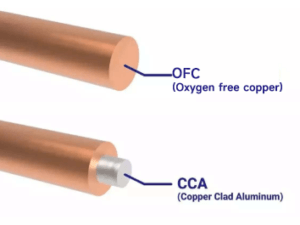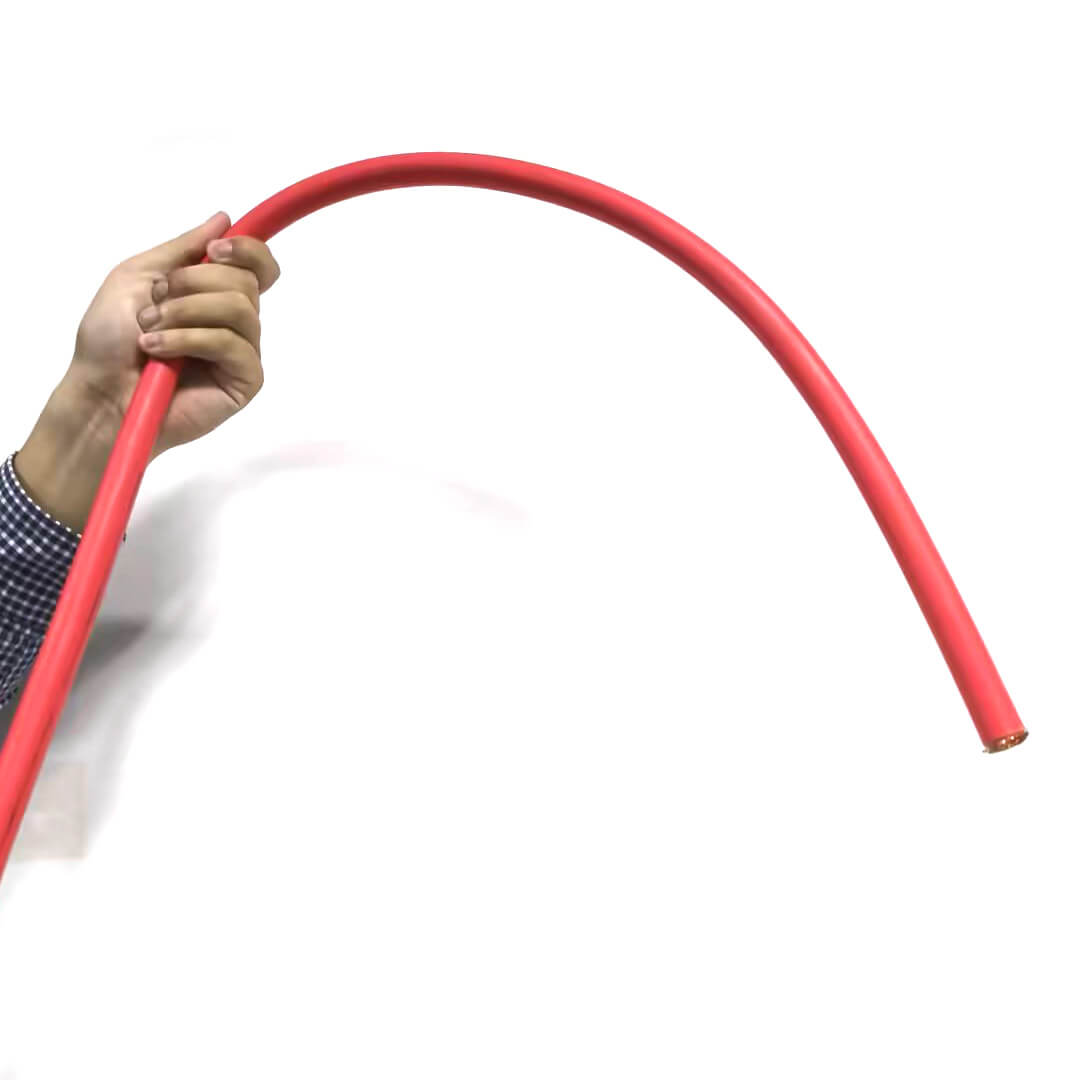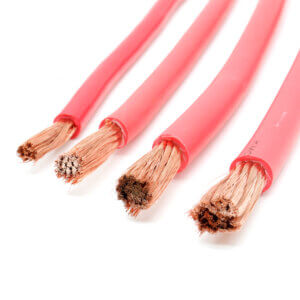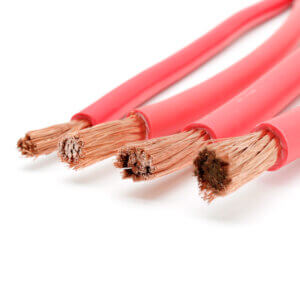How to Judge the Quality of Battery Cables
You can find battery cables at various price points, and the differences in cost can be substantial. This often leads to the question: What’s the difference between these battery cables, and why is there such a large price gap? Here, I’ll briefly explain some reasons from a manufacturer’s perspective:
- Reduced Copper Content:
Manufacturers might reduce the amount of copper in the cable, replacing the missing portion with insulation. For example, a cable labeled as 4AWG might actually be 6AWG in terms of copper content. Although the outer diameter may appear the same, the actual amount of expensive copper is significantly less. This difference can be clearly seen in comparative diagrams.

- Use of Copper-Clad Aluminum (CCA):
Some manufacturers substitute part of the copper with aluminum wire, creating a copper-clad aluminum cable that contains only about 20% copper or even less. Externally, the metal part of the cable may seem unchanged, but on closer inspection, you’ll notice that some wire centers are silver-colored, indicating the presence of aluminum rather than copper.

- Reduced Cable Length:
Manufacturers may also reduce the actual length of the cable. For instance, a standard 100m/roll cable might only be 90m in reality. Even if the cable shows a meter mark indicating 100m, it might not be accurate, as some manufacturers manipulate the meter spacing. - Different Sheath Materials:
The sheath material can also affect the price. Typically, battery cables are insulated with PVC or rubber, but certain demanding applications require special materials like XLPE, XLPO, or LSZH. Due to their specialized use and lower demand, these materials tend to be more expensive, as they can lead to less economical production sizes.
Tips for Determining Cable Quality
- Measure the Weight:
The first and easiest method is to weigh the cable. Copper, aluminum, and plastic all have different weights. You can check the expected weight of pure copper cable on the website of a reputable local supplier. If there isn’t much difference in weight, the cable’s quality is likely acceptable.
| Conductor | Insulation | Weight Approx (KG/KM) | |||
| Crossection (awg) | Construction (No./awg) | DIA. (mm) | Thickness (mm) | O.D. (mm) | |
| 8 | 665/0.127 | 4.26 | 1.15 | 6.7 | 115 |
| 6 | 1050/0.127 | 5.35 | 1.53 | 8.5 | 166 |
| 4 | 1666/0.127 | 6.80 | 1.53 | 10.0 | 257 |
| 2 | 2646/0.127 | 9.15 | 1.53 | 12 | 373 |
| 1 | 3332/0.127 | 9.53 | 2.04 | 14 | 453 |
| 1/0 | 4214/0.127 | 11.10 | 2.04 | 15.0 | 545 |
| 2/0 | 5292/0.127 | 12.20 | 2.04 | 17 | 653 |
| 3/0 | 6784/0.127 | 13.71 | 2.04 | 18.0 | 847 |
| 4/0 | 8512/0.127 | 15.70 | 2.40 | 20 | 1052 |
2. Measure the Resistance:
A more professional method is to measure the cable’s resistance. With a fixed length and size, the resistance should be consistent. If the resistance aligns with expected values, the cable is likely to be of good quality.
| Crossection (awg) |
Conductor resistance Ohm/km |
| 8 | 2.36 |
| 6 | 1.44 |
| 4 | 0.91 |
| 2 | 0.57 |
| 1 | 0.47 |
| 1/0 | 0.37 |
| 2/0 | 0.29 |
| 3/0 | 0.23 |
| 4/0 | 0.18 |
If you’re looking to purchase quality battery cables, you’re welcome to consult us. KMCABLE has been committed to the production of battery cables for over 10 years, offering reliable and comprehensive solutions.




